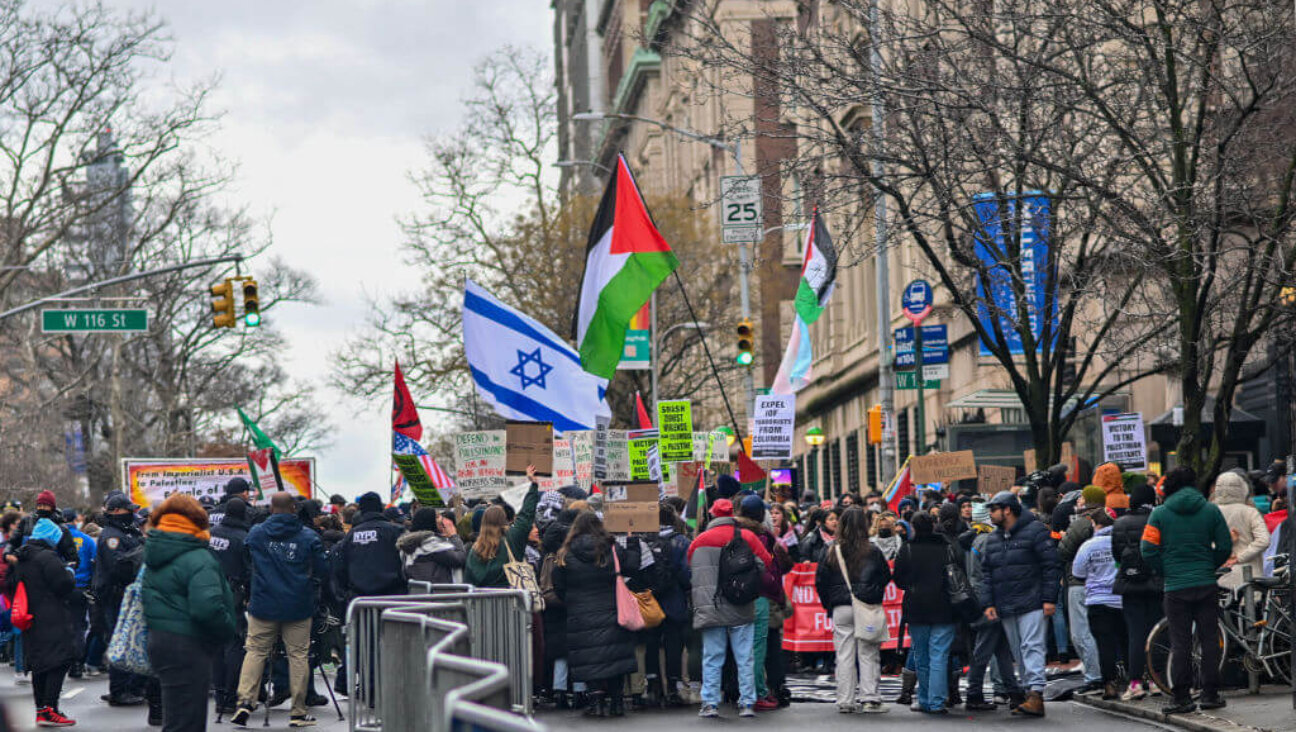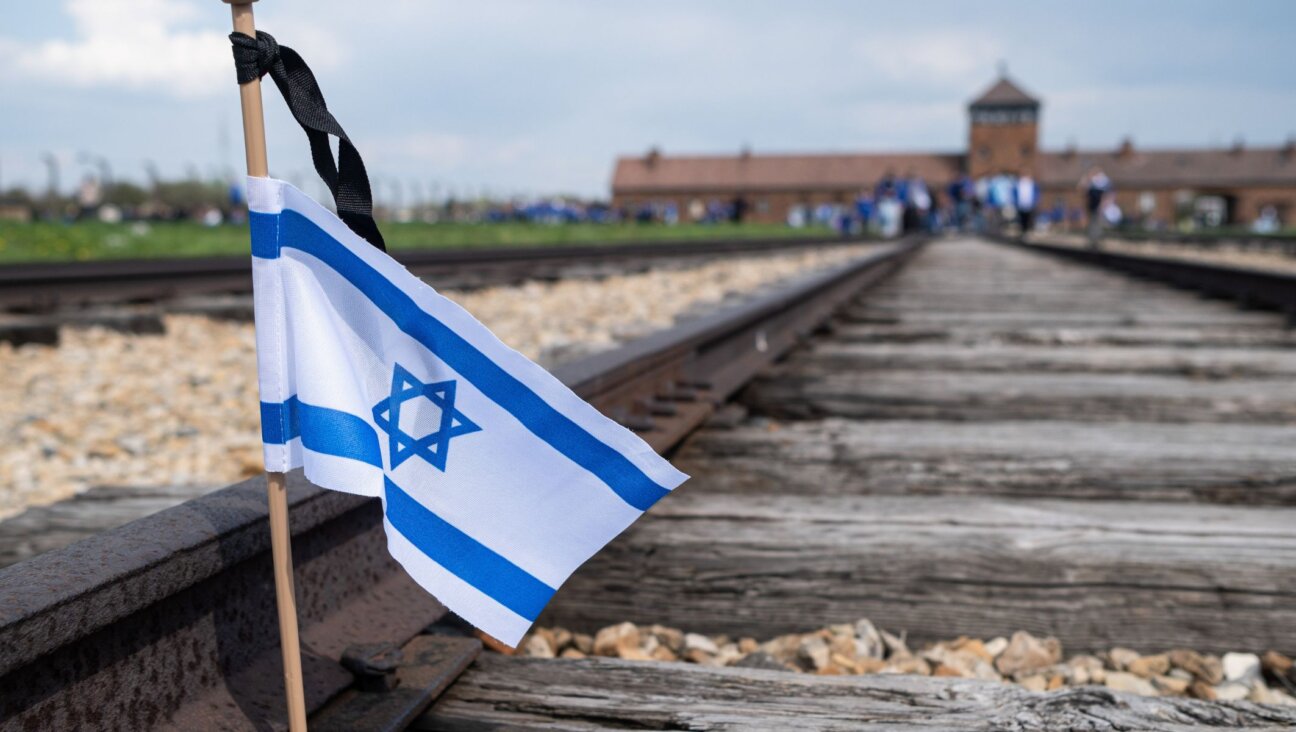July 1, 2005
Group Backed Bolton
A June 24 article on President Bush’s choice for ambassador to the United Nations fails to mention B’nai B’rith International’s support for John Bolton’s nomination (“Groups Buck White House on Bolton”). In fact, this support is a matter of public record, as B’nai B’rith International sent letters of support to the members of the Senate Foreign Relations Committee and the full Senate highlighting Bolton’s longstanding record of support for Israel and the American Jewish community.
As a key player in the repeal of the infamous U.N. resolution equating Zionism with racism, Bolton opposed the precursor of today’s blatant antisemitism within the U.N. As an organization that sent its top representatives to witness the 2001 conference against racism in Durban, South Africa, B’nai B’rith understands that the United States needs a strong supporter of Israel and the Jewish people in order to change the atmosphere in the U.N.
U.N. reform must include a change in the plethora of anti-Israel resolutions, the wasteful expenditures on Israel-bashing U.N. bodies like the Special Committee to Investigate Israeli Practices, and the discriminatory second-class status of Israel in the U.N. system. Moreover, we anticipate further requests for anti-Israel opinions from the International Court of Justice, and as America’s ambassador to the U.N., Bolton has the experience and commitment to act country by country to forestall any such request by the U.N. General Assembly.
It has been an iron-clad principle in the Jewish community that we support our friends, and B’nai B’rith International will continue to do so with Bolton because it is the right thing to do.
Daniel Mariaschin
Executive Vice President
B’nai B’rith International
Washington, D.C.
Restore Kiev Statue
The Forward has the distinction of being the only newspaper, other than the Russian-language Novoye Russkoye Slovo, to report on the recent mysterious removal of the statue of Sholom Aleichem from a prominent intersection in Kiev, Ukraine (“Missing Kiev Statue Touches Off Frenzy,” May 20).
Unfortunately, the chairman of the Vaad in Ukraine, Joseph Zissels, is quoted extensively by the Forward as making statements that contradict the report in the Russian-language newspaper. He explains the removal as being done for the purpose of refurbishing, and claims that the reinstallation will take place within the next few weeks under a private organization contract.
But if that is so, then why did the workers who removed the statue hack away the Yiddish letters on the base of the statue? We raised this question in an e-mail with the executive director of the Jewish Foundation of The Ukraine, Arkady Monastirsky. The question has not been satisfactorily answered, and we are forced to maintain our impression that the full story has not yet emerged.
We are all aware that the Ukrainian government was widening the intersection to clear the way for a massive public event in the area. It leaves us with the impression that the statue of Sholom Aleichem may not have been removed for refurbishing, but simply removed as a cultural contribution of Jewish life in Ukraine.
The photo that appeared on the front page of the Forward was taken by the reporter a few years ago, at which time the statue, as with many a bronze, hardly appeared in need of special attention other than simply being kept clean. We have a series of photos from different angles, some with family members, which support this impression.
Now, however, we must wait a few weeks to see whether Zissels’s story is correct, and if so, what about the Yiddish letters that had been vandalized? Will they too be restored?
Sidney Gluck
President
Sholom Aleichem Memorial Foundation
via e-mail
Israel’s Right To Fight
Perhaps opinion writer Amitai Etzioni is too old to remember what he fought for in the Israeli war of independence (“Hand Over Settlements to Palestinians,” June 24).
Of course, back then, he and his countrymen believed in fighting for the right of Jews to live in a land of their own. But now, 50 years later, this hero of the Palmach no longer counsels fighting to maintain sovereignty, avenging the victims of terrorism or protecting the rights and liberty of Israeli citizens.
Rather, he has come to champion the post-Zionist response to aggression: sacrificing for peace. The sacrifices go on, but there is no peace. Nor can it ever bring peace, for it only incites the aggressor to ever greater barbarism, to demand ever greater rewards. It has worked so well for Palestinians that now the world is united in granting this conglomerate of terrorist organizations a state, carved out of the territories for which Jews fought and died.
Habituated to sacrificing life, limb and land for peace, with nothing to show in return but more terrorism, Etzioni posits the yardstick by which he would gauge the success of the expulsion. Will, he asks, “the retrenchment make it easier or harder to remove some settlers from the West Bank?”
In short, expel the Jews but have them leave their homes, businesses, greenhouses and schools intact. If that is done correctly, the expulsion will be a success: Show the world how good we are, and, to borrow Etzioni’s words, “prevent severe damage to Israel’s reputation.” Then the Israeli government could do the same on the West Bank and tear yet more Jewish lives asunder.
I have to wonder, in which way does Etzioni’s vision differ from that of Palestinians who are committed to dispossessing Jews? And why should Sharon stop with Gaza? What about those really snazzy homes in Tel Aviv and Jerusalem? Handing them over would surely convince the world that Israel wants peace.
Lynn Field
Monroe Township, N.J.
The Palestinians’ Plight
It is an easy mark for a Jewish newspaper to hit Amnesty International for not having been more zealous in condemning Palestinian suicide bombers (“Absurdity International,” June 17). Yes, suicide bombings of Israeli civilians should have been vigorously denounced from the start.
But what about the other side? Where is the vigorous condemnation of the killing of innocent Palestinians who are victims of Israeli military operations?
The Forward cites the figure of 800 Israeli civilians who were victims of suicide bombers in the past four and a half years. But in this same period, about 3,000 Palestinians were killed by Israel.
We know from many press reports that targeted assassinations conducted by the Israeli military often killed innocent bystanders, and that about 400 of these 3,000 Palestinian victims were children. Thus, not all the Palestinian victims were terrorists, not all the residents of the thousands of Palestinian homes that were demolished by the Israeli military were terrorists and not all the thousands of Palestinians who are daily harassed and humiliated at check points by Israeli soldiers are terrorists.
It is unfortunate that many American Jews are absolutely indifferent to the plight of innocent victims on the Palestinian side, even when the reports of this come from sources other than Amnesty International.
Sidney Resnick
Hamden, Conn.
Selling Shoah Kitsch
As the Forward quite correctly reports, there is an ethical question about selling Holocaust artifacts on Ebay (“Holocaust Artifacts on the E-block,” May 27).
However, putting the items from estate sales on line for the most part saves them from the garbage can. Many of the online sellers come from Israel, aware that museums have so much material that, for the most part, they will not purchase anything more.
So, these articles become “antiques” from a particularly terrible era in world and Jewish history, just as collectibles exist from every other war in history.
There is another side as well. Some smaller museums have been looking for specific artifacts, cannot borrow them from Holocaust museums and are left without anything to display unless they find it through a broker or online.
And there are also misconceptions. Almost all of the letters from Auschwitz and other camps are from political prisoners — not Jews — to relatives on the outside. Some of the items for sale, such as currency from Theresienstadt and Lodz Ghetto, are quite useful in a classroom situation — it can show, for example, how the Americans never got segregation right and the Nazis did: the Americans never printed separate money for African Americans.
If Jews have some concerns about this issue, they might be concerned with the vast market of “Negro kitsch,” “Sambo” items and such which are offensive to people with whom we live.
But, no blasphemy here, just capitalism at work that may have good results.
Stephen Feinstein
Director Center for Holocaust and Genocide Studies
University of Minnesota
Minneapolis, Minn.

I hope you appreciated this article. Before you go, I’d like to ask you to please support the Forward’s award-winning, nonprofit journalism during this critical time.
Now more than ever, American Jews need independent news they can trust, with reporting driven by truth, not ideology. We serve you, not any ideological agenda.
At a time when other newsrooms are closing or cutting back, the Forward has removed its paywall and invested additional resources to report on the ground from Israel and around the U.S. on the impact of the war, rising antisemitism and the protests on college campuses.
Readers like you make it all possible. Support our work by becoming a Forward Member and connect with our journalism and your community.
Make a gift of any size and become a Forward member today. You’ll support our mission to tell the American Jewish story fully and fairly.
— Rachel Fishman Feddersen, Publisher and CEO
Join our mission to tell the Jewish story fully and fairly.
























